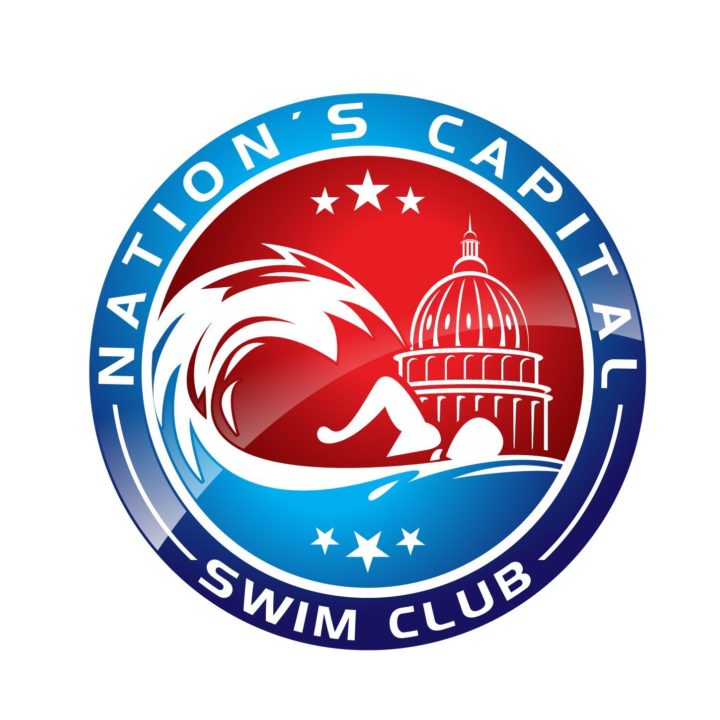The Tom Dolan Invite’s mid-day session saw another National Age Group relay record go down, as the Nation’s Capital Swim Club (NCAP) 200y medley relay squad exploded past the previous boys 11-12 mark on their way to winning the event.
The previous record of 1:46.05 set by Tualatin Hills Swim Club early in 2014 was swept away by the NCAP team of Ryan Catron, Darius Truong, Leo Goldblatt, and Brett Feyerick in their winning time of 1:44.74.
The splits of the record-smashing foursome:
Ryan Catron – 26.05
Darius Truong – 29.73
Leo Goldblatt – 25.20
Brett Feyerick – 23.76
The Tualatin Hills relay team was comprised of David Liu, Caspar Corbeau, Nathaniel McFaul, and Trenton Martinez.
Full Tom Dolan Invite Meet Results Available Here; Also on Meet Mobile.

Wow…..NCAP’s 11-12 year girls and boys broke a NAG relay! I would say they are doing a pretty good job up there with the motivation and swimming. 1st in the Gold Medal club too? So not only are they an age group powerhouse, but an outstanding senior program too? Good job is in order.
SwimSwam…..what ever happened to the weekly wonders? This kind swimming falls under that category. Bring back the weekly wonders and start with these kids!
Mark – we still do Weekly Wonders. Every Thursday. This article is a month old, and the goal of Weekly Wonders is primarily to recognize swimmers who have not otherwise been recognized. These kids already have their own article, so to put them in the Weekly Wonders as well would be a bit redundant.
Extreme specialization, unnatural selection, and advances in equipment.
http://www.ted.com/talks/david_epstein_are_athletes_really_getting_faster_better_stronger/transcript?language=en
Specialization: my impression is that most age group swimmers are generalists, at least until late high school. This probably applies more to post-grad elite swimmers, where I agree there is more specialization than before.
Equipment: I’m curious how much current jammers outperform early 2000s fastskins. I’m skeptical that its more than a few tenths per 50.
Unnatural selection: I believe this one. USA swimming has had a large growth in membership in the last ten years, probably outpacing growth in other sports (Phelps effect?). You’re bound to get more talent out of this larger sample, and to find more athletes whose physical and physiological profile is ideal for swimming.
fatsmcgee – I wonder if Moosemoore’s point wasn’t specifically “specialization of race” as much as it was “specialization of sport.” I won’t speak for him, but I’d say it has to do with the number of kids who are training full-time, 6+ sessions a week by age 12 as compared to prior generations. When I was 12 (which was in the 90’s), kids who were playing one sport and practicing that much were shunned. Now kids who aren’t can be shunned, depending on the coach.
It’s interesting to see your generational perspective here. By the time I was training in the early 2000s, there were already a lot of single sport athletes, 6+ practices for 13 year olds (if not 12 year olds), and the exact type of shunning you describe. Then again, this may have been atypical or ahead of the curve for the time.
The emergence of energy drinks probably has an effect too.
How are kids so fast these days? I swam at Tom Dolan 10 years ago and am continually impressed with the incredible depth and talent in age group swimming, particularly in the DC area. C finalists in many events this year would have been A finalists in 2003. It’s hard to imagine that this is purely from improvements in technique, but I’m genuinely curious. Whatever they’re doing over there is working!
Agreed. The times these kids put up seem other-wordly (says the very fat, apparently unskilled old guy).
King Aquatic Club posted a 1:44.97 December 30th.
You’re correct – King did put up that time at a Thanksgiving relays meet last month. However, it hadn’t been officially added to USA Swimming’s NAG records, even though the records were updated three days ago. Not sure what the issue with the record was.
There have been several events like this recently – for example, Simone Manuel’s sprint free times have yet to be added from the Art Adamson Invite in mid-November. Mostly, we assume official paperwork is still being processed and the records will be updated in due time. But occasionally a record never makes it into USA Swimming’s official document, such as the 17-18 200 breast record set by Kevin Cordes in 2012.